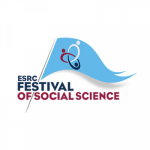Author: Mark Hadfield (Design, Engineering and Computing)
Alternative name suggestion: Engineering and Design
Brief theme summary: This covers most of the activity from UOA 15 General Engineering and hence the alternative title suggestion. In view of the national STEM agenda it is important that research within this area is also aligned with current and future education strategies and also with industrial engagement. Academics associated with this theme will be mostly from the School of DEC currently located within the Design simulation, Sustainable Design research and Smart Technology (Biomedical engineering). Alternative theme encompasses our portfolio of engineering in mechanical, material, bio-medical and sustainable design research activities.
Structure is terms of linkages – see mission statements recently posted on the I drive from the relevant research centres within DEC. (I:\DEC\Private\Research\Business Plans\Centre Vision Statements)
Scope of theme: what is included?
Please see vision statements from the I Drive for DSRC, SDRC and STRC
Areas include:
- Simulated Design Analysis
- Creative Design
- Virtual Manufacturing Processes
- Design modelling using finite elements, Boundary elements, Computational stress analysis methodology.
- Vibration and Noise experimentation and theoretical analysis
- Theories and experimentation of tribology
- Sustainable Design
- STEM, General Engineering, Design Education
- Advanced materials
- Materials evaluation and characterisation
- Biomedical engineering (FES)
- Applied AI
- Tribology across general engineering sectors
- Corrosion and Fretting
- Surface engineering
New future opportunities such as the Space technology and economy should be embraced given the new EU Space Centre is based in Oxford.
Scope of theme: what is excluded?
Large engineering laboratory studies due to space/equipment limitations i.e.
- Engine lab for thermodynamic and energy studies
- Fluid mechanics
- Controlled noise measurements
- Large/heavy manufacturing studies
Materials fabrication and development
Which big societal questions are addressed by this theme?
- Hydrogen economy
- Low carbon energy
- Quality of life issues such as environment and high value services
- Strategic advancements for SME’s
- Governmental vision and strategy of industrial support
- Energy efficiency
How do these link to the priorities of the major funding bodies? The nature of funding linked to this research theme depends on industrial collaboration for most income streams. Generally enhancing academic relationships with industry such as business breakfast events, short courses etc provides the foundation of opportunities listed below.
Direct industrial collaboration.
EU grants: people exchange (Madam Curie). Project grants including, technology (robotics), energy – energy savings, sustainable development, industry and industrial – manufacture, materials, research in practice – measurement methods, nano-technology, transport and construction – aerospace and space technology.
EPSRC including CASE studentship, areas include: Materials, mechanical and medical engineering,Process, environment & sustainability programme funding plan, platform grants and networks
Royal Academy of Engineering: staff mobility grants include the areas of robotics, sustainable design, complex systems
AHRC including Science and Heritage linkages
Medical Engineering:
MRC
NHS
DSRC
Welcome Trust
Leverhulme Trust – high profile, impact general research
TSB – industry joint funding for design prototype etc
KTP – Advanced materials, nanotechnology, electronics, high value manufacturing, energy generation, healthcare, transport, Space.
How does this theme interlink with the other BU themes currently under consideration? Health and Wellbeing: through biomedical engineering research such a muscle stimulation, prosthesis design and modelling, environmental design, design of products/services at the health sector.
Recreation and leisure: links to sports design analysis such as swimmers acceleration monitoring (PhD student), Olympic ethics on Paralympics runners.
Society and social Change: human interaction use of technology.
Environmental change and biodiversity: environmental impact study of products and services.
Green economy and sustainability: Product innovation, green technology such as micro CHP, efficiency use of product and services such as RNLI.
Aging: Innovation of products to improve the quality of life of the elderly.
Learning and public engagement: sustainable design and education.
Entrepreneurship and economic growth: Commercialisation of products and as the pop-up tent, flood barrier. Patents from research projects e.g. Robotics and biomedical engineering.











 ESRC Festival of Social Science 2024 Open Call – Deadline for Applications Thursday 16 May
ESRC Festival of Social Science 2024 Open Call – Deadline for Applications Thursday 16 May We can help promote your public engagement event or activity
We can help promote your public engagement event or activity Horizon Europe News – December 2023
Horizon Europe News – December 2023